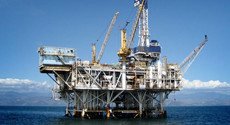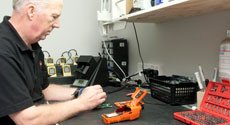Our gas detection systems are trusted by the mining industry for their reliability and lower total cost of ownership. Find out more…
On this page
- Gas detection in the mining industry
- FAQs (scroll down)
- Case studies (scroll down)
- Testimonials (scroll down)
Gas detection in the mining industry
There is no harsher environment in NZ than the underground coal mines at Huntly. Any gas detectors used here are pushed to the limits. The Industrial Scientific iTX instruments have been used for 10 years and have stood the test of time. Now that this instrument is being discontinued, the MX4 is being phased in.
The MX4 is proving to be a worthy replacement. The first instruments went in two years ago and because of the small size and weight, are proving to be popular. It is expected that over the next 18 months the MX4 will completely replace the iTX. Although small, they are handling the conditions and are expected to last as well as the iTX.
Specific applications
- Atmosphere monitoring
- Seal inspection
Potential hazards
- Carbon Monoxide (CO)
- Methane (CH4)
- Oxygen deficiency/enrichment
Entec provides a wide range of fixed gas detection systems and portable gas detectors for the fishing industry to help keep employees safe and production running.
Find out more…
You can trust our expertise and rely on our service
We know your No. 1 priority is protecting your people and plant, and making sure you don’t fail legal or OSH requirements, have a staff member harmed or be prosecuted for an accident. With an increasing focus on health and safety in the workplace, your job depends upon it.
We understand the unique requirements of the mining industry. You don’t need the hassle and risk of gas detectors that are expensive, problematic, unreliable, prone to sensor failures, require too much servicing, or have recurring problems. We’ll provide you with gas detection equipment that is…
- Cost-effective.
- Serviced locally in our authorised service centre (the only one in NZ).
- Easy and reliable to manage on-site via function test / bump test stations.
- Backed up with our support and expertise – we’ll be there when you need us.
Find out more…
FAQs
How long does your gas detection equipment last?
Depending on how they’re used there’s no reason a high-end gas detection instrument shouldn’t last 6 years. With low-cost instruments ($1,000) you will reach a stage where the gas detector is still fine but the cost of keeping it in the field is greater than buying a new one. For example, replacing two sensors and calibrating the unit could cost $1,100 compared to a new instrument at about $1,000.
What sort of water ingress protection do your gas detectors have?
All our instruments are IP rated (ingress protection rated). Typically IP67, which is very high. Gas detectors rated to IP67 must be dust tight and withstand immersion in water up to 1 metre deep for 30 minutes.
Solid particle protection level 6: No ingress of dust; complete protection against contact.
Liquid ingress protection level 7: No ingress of water in harmful quantity when the unit is immersed in 1 metre of water for 30 minutes.
See https://en.wikipedia.org/wiki/IP_Code for more info.
What are my options with bump testing / calibration?
We can provide you with options from the top end to the basic. With our iNet InSite programme you get all the bells and whistles, all the basics like data-logging, bump testing and calibration; plus you get reports on instrument usage such as…
- Instrument in alarm condition and alarm ignored.
- Instrument turned off whist in alarm condition.
- iNet Control.
What is iNet Control?
iNet Control is a web-based application accessible from any PC web browser that allows you to configure and manage your gas detector fleet. It gives you practical insights into your gas detection program using trends, performance metrics and custom reports.
Can you calibrate our gas detectors for us?
Yes. Calibrations done by us at our premises cost $140 per instrument.
Are gas detectors intrinsically safe?
Yes. All our instruments are independently tested by authorities such as ATEX, IECEx, ANZEx, UL, CSA and many more, usually country dependant.
New Zealand recognises the first 3. The gas detector has a sticker attached to it referring to the certification authority and its rating. Many have more than one authority rating, often 3.
How much do gas detectors cost?
Depending on sensor configuration and the number of gas detectors being purchased, the price varies from $950 to $4,500. The MX4, our most popular portable instrument, sells for $950 to $1,150 depending on configuration.
What’s the turnaround for service?
We have same-day turnaround for over 90% of the gas detection instruments we service and calibrate. It varies a little depending on the number of units in for service, but we strive for same day turnaround as much as possible.
Do your gas detectors detect toxic gases such as carbon monoxide (CO), nitric oxide (NO) and nitrogen dioxide (NO2)?
You would typically be looking at our MX4, MX6 and single gas models depending on the application, etc.
Do your gas detectors detect hydrogen sulphide (H2S)?
Yes. You would typically be looking at our MX4 model.
Do your gas detectors detect combustible gasses such as methane, hexane, pentane and ethane?
Yes. You would typically be looking at our MX4 model.
Do your instruments detect chlorine?
Yes, we can fit multiple sensors in the MX6 including the CI2 sensor. The single gas GasBadge Pro is available in CI2 also.
Can you train us in how to use the gas detectors?
Yes, most definitely. On delivery we like to spend time with the users taking them through the basic use of the gas detector. We also like to spend time with the users of the docking stations teaching them how to use them. Industrial Scientific also has very good online training modules.
Case study: Coal mine fed up with costly & lengthy repairs
An underground coal mine was having service issues with their supplier, both in cost and the length of time it took for servicing and repairs.
They initially ordered 6 gas detection instruments from Entec. Over the years the opposition instruments have declined to only a few while we now have around 50 on site.
They state that the iTX instrument they use is the best instrument they’ve ever employed at the mine. They’ve gone from fed up to delighted, and you can’t get better than that.
Testimonials
“We’ve been using Entec’s gas detectors for 7 or 8 years. We left our previous supplier because we weren’t too happy with the instrument service. Whenever an instrument was broken down or required maintenance, it was taking a long, long time to get them back. It was difficult to predict how long it was going to take.”
“What makes Entec stand out is the availability of service and supply. When we need something urgently – some new solution or some new instrument to be supplied urgently, or even hired urgently, or some instruments to be serviced because we’ve broken them, we get a really quick response. So in terms of service and their co-operation, we are really pleased indeed.”
“In terms of the iTX detectors, a great benefit is their reliability. They are difficult to break, difficult to damage, hard to be out of service. Probably the only reason the detector gets broken is that it gets to the end of its life – or perhaps our own behaviour. The reliability of iTX is outstanding.”
“John’s customer care is really good. If anyone was looking to buy product, I would definitely recommend John Langslow. Our relationship is not so formal – there’s trust between each other. We would love to have this sort of customer care with every contractor.”
– [Name withheld], ventilation manager, mining industry
Do you have questions?


